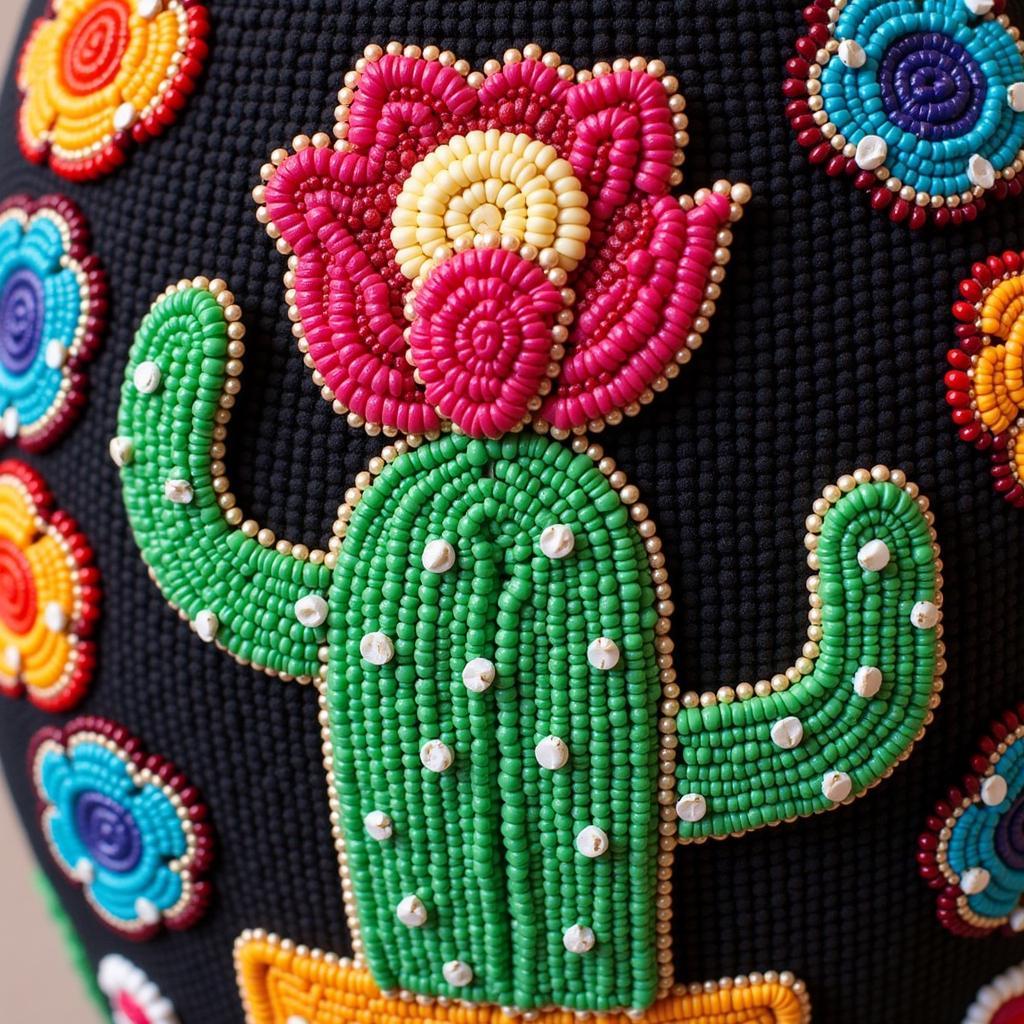Exploring the Vibrant World of Huichol Art
Huichol art is a vibrant and deeply symbolic form of artistic expression that originates from the indigenous Huichol people of Mexico. Known for its intricate beadwork, colorful yarn paintings, and deeply spiritual themes, Huichol art provides a fascinating glimpse into a rich cultural heritage.
A Journey into Huichol Iconography
At the heart of Huichol art lies a complex system of symbols and patterns, each carrying profound meaning. These intricate designs often depict deities, sacred animals, and elements of nature that are central to the Huichol belief system. One of the most prominent symbols is the peyote cactus, revered for its hallucinogenic properties and considered a sacred plant that allows communication with the divine.
 Huichol Beadwork Depicting Peyote Ceremony
Huichol Beadwork Depicting Peyote Ceremony
The Art of Niérika: Yarn Paintings as Spiritual Narratives
Huichol yarn paintings, known as Niérika, are not mere decorations but sacred narratives that transmit history, myths, and spiritual beliefs. These captivating artworks are meticulously crafted by pressing colorful yarn onto boards covered with beeswax or pine resin. The vibrant hues and intricate patterns weave together stories of creation, rituals, and the interconnectedness of life and nature.
The Significance of Huichol Art Beads: A Universe in Miniature
Beadwork holds a special place in Huichol art, adorning everything from ceremonial objects to everyday items. Using tiny glass beads, often imported from Czechoslovakia, Huichol artists create intricate patterns and vibrant designs on surfaces like gourds, masks, and sculptures. Each bead is painstakingly placed, reflecting the artist’s dedication and the spiritual significance imbued in every piece.
The Enduring Legacy of Arte Huichol: Bridging Tradition and Modernity
Today, Huichol art continues to captivate art enthusiasts and collectors worldwide. From galleries in Mexico City to international exhibitions, these vibrant expressions of Huichol culture have found a place in the global art scene. This recognition not only helps preserve a rich artistic tradition but also provides economic opportunities for Huichol communities, ensuring the continuation of their cultural legacy.
FAQs: Delving Deeper into Huichol Art
What are the primary materials used in Huichol art?
Huichol artists primarily use natural materials like yarn, beeswax, beads, wood, and seeds. The vibrant colors often come from natural dyes derived from plants and insects.
What is the cultural significance of the peyote cactus in Huichol art?
The peyote cactus holds deep religious significance for the Huichol people, believed to be a sacred plant that allows communication with the divine. It’s a recurring motif in their art, reflecting its central role in their spiritual practices.
How is Huichol art used in traditional ceremonies?
Huichol art is intrinsically linked to spiritual beliefs and ceremonies. Yarn paintings serve as sacred narratives, while beaded objects are often used in rituals and offerings, connecting the physical and spiritual realms.
Conclusion: An Invitation to Experience the Magic of Huichol Art
Huichol art offers more than just visual appeal; it’s a window into a vibrant culture deeply connected to nature and spirituality. Each piece tells a story, whispers ancient wisdom, and invites us to appreciate the beauty of this unique art form. As you explore the intricate designs and vibrant colors of Huichol art, you embark on a journey of cultural discovery, appreciating the artistry and profound symbolism embedded within each creation.



